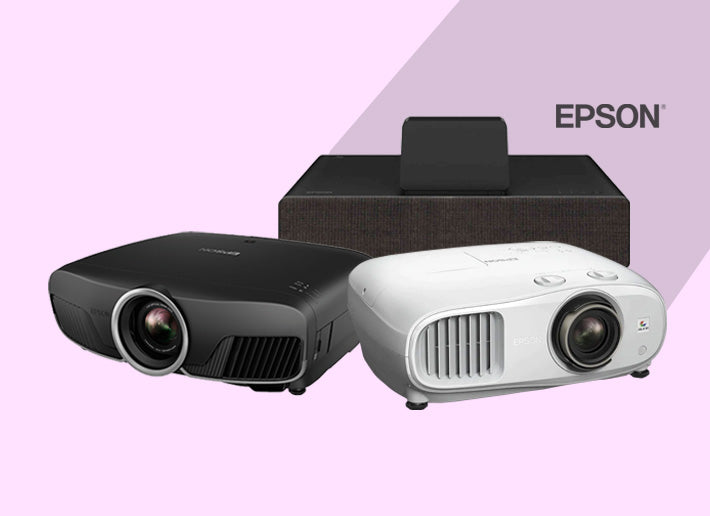From dedicated circuits to surge protection, this guide walks you through everything you need to power your system efficiently while keeping your equipment safe and future-ready.
A well-designed home theatre is more than just an assembly of high-end AV equipment—it relies on a robust and thoughtfully planned electrical infrastructure. Power fluctuations, insufficient circuits, or improper grounding can degrade audio and video performance, introduce unwanted noise, or even damage expensive components.
Whether you're building a dedicated home theatre or upgrading an existing setup, paying close attention to electrical considerations ensures reliability, longevity and optimal performance. Let’s walk through the key electrical factors to consider and explore best practices along the way.
Dedicated Circuits & Power Requirements
A home theatre demands substantial and consistent power, making a dedicated electrical circuit essential. Sharing a circuit with household appliances can lead to power dips, tripped breakers and interference. Here’s what to consider:
- Calculate Power Draw: Amplifiers, projectors, subwoofers and AV receivers can be power-hungry. Check the wattage requirements of each device and ensure your circuit can handle the combined load without exceeding 80% of its capacity. Using a power calculator or consulting an electrician can help ensure proper load distribution.
- Breaker Rating: A standard 15A circuit may suffice for basic setups, but a 20A circuit is recommended for more power-intensive systems. If your setup includes multiple amplifiers or high-powered subwoofers, consider multiple dedicated circuits to distribute power efficiently.
- Voltage Consistency: Voltage fluctuations can cause performance issues, especially with sensitive equipment like projectors. Using a power conditioner (discussed below) can help stabilise voltage levels and ensure your AV system operates optimally without experiencing sudden dips or spikes.
Surge Protection & Power Conditioning
Your home theatre investment needs protection from unexpected power surges and fluctuations. A sudden spike in voltage can irreparably damage your AV gear. Here’s how to safeguard your system:
- Surge Protectors: A high-quality surge protector with a high joule rating (2000+ joules) should be the minimum defence against power spikes. Look for models with built-in noise filtration and indicator lights to monitor functionality.
- Power Conditioners: Unlike standard surge protectors, power conditioners filter electrical noise and provide consistent voltage delivery. This reduces interference affecting audio and video performance, ensuring cleaner sound and more stable video output.
- Uninterruptible Power Supply (UPS): If you use a projector or a media server, a UPS is invaluable. It provides backup power during outages, preventing abrupt shutdowns that could damage sensitive components or lead to data loss. Additionally, a UPS allows a controlled shutdown of your system, which is particularly beneficial for components with volatile memory.
Wiring & Outlet Placement
Proper wiring and strategic outlet placement can improve both aesthetics and functionality. Planning these elements prevents unsightly cables and power-related inconveniences.
- Strategic Outlet Placement: Install outlets where they will be hidden behind equipment, avoiding the need for extension cords. Place outlets at different heights to accommodate wall-mounted TVs, projectors and floor-standing components.
- Proper Cable Routing: Avoid running power cables parallel to audio and video cables for long distances, as this can introduce electromagnetic interference. Use separate conduits for power and signal cables to maintain clean transmission and minimise noise.
- In-Wall Wiring: Running power and signal cables through walls (using in-wall-rated cables) eliminates clutter and enhances safety. Use conduits or raceways to future-proof for upgrades and to keep cables organised and easy to manage.
Grounding & Electrical Noise
Poor grounding can introduce unwanted hums and electrical noise, affecting both audio and video quality. Proper grounding techniques help eliminate these issues.
- Dedicated Grounding: Ensure your AV system has a solid, separate ground connection to reduce the chances of ground loops. A properly grounded system prevents static buildup and minimises electrical interference.
- Eliminating Ground Loops: If you hear a buzzing sound in your speakers, it could be a ground loop issue. Use a ground loop isolator or lift the ground on certain components to break the loop. Separating power and signal cables can also help mitigate ground loop issues.
- Shielded Cables: Power cables running near audio or video cables can introduce interference. Using shielded cables helps prevent unwanted electrical noise, improving audio clarity and video performance.
Voltage & Circuit Load Balancing
Distributing electrical loads properly ensures stable performance and prevents circuit overloads.
- Multiple Circuits for Large Setups: If your setup includes multiple amplifiers or powerful subwoofers, spreading the load across multiple circuits is ideal. Consider dedicated circuits for high-powered AV components to prevent breaker trips.
- Voltage Drop Considerations: Long power cable runs can lead to voltage drop, affecting performance. Use thicker gauge wiring if your equipment is far from the electrical panel. A voltage stabiliser can also help maintain a consistent power supply.
- Using a Power Meter: A power meter helps monitor voltage fluctuations and consumption, allowing you to make necessary adjustments. This is particularly useful for identifying power-hungry components that may require a dedicated power source.
Smart Power Management
Modern home theatres can benefit from intelligent power solutions that enhance efficiency and convenience.
- Smart Power Strips: These automatically power down unused components, reducing standby power consumption and extending the lifespan of your equipment.
- Sequenced Power-On Systems: High-power amplifiers and subwoofers should turn on after other components to prevent sudden power spikes. Some power conditioners include built-in sequencing to ensure a smooth startup process.
- Remote Power Monitoring: Smart outlets and energy monitors let you track power usage and identify inefficiencies. Some systems allow remote shutoff or rebooting, which is particularly useful for troubleshooting issues without physically accessing the components.
Lighting & Power Isolation
Lighting can introduce electrical noise and impact AV performance. Proper isolation ensures a seamless experience.
- Avoid Shared Circuits with Lighting: Fluorescent and LED dimmers can create noise that interferes with AV signals. Keep lighting on a separate circuit from audio and video equipment to minimise interference.
- Dimming Flicker Prevention: Use high-quality dimmer switches designed to reduce flickering and buzzing. Consider LED-compatible dimmers that provide smoother transitions and less interference.
- Projector Power Isolation: Projectors should be on an isolated circuit to avoid dips in brightness when other appliances turn on. Using a power conditioner for projectors can also help stabilise voltage and prevent sudden flickers.
Future-Proofing & Expandability
A well-planned home theatre should accommodate future upgrades without requiring major rewiring or electrical modifications.
- Extra Conduits for Future Upgrades: Running additional conduits makes it easier to add new components without tearing down walls. Plan for future technology advancements that may require additional wiring.
- Higher-Rated Circuits: Installing 20A circuits instead of 15A gives more flexibility for power-hungry devices. This can prevent overloading as your system expands.
- Planning for More Power Demands: If you foresee adding more amplifiers, seating power (recliners with built-in power), or additional subwoofers, ensure your electrical system can handle the expansion. Running dedicated power lines for future use is a proactive approach that saves time and cost later.
Also Read: Here are easy tips to improve your Home Theatre experience
By addressing these electrical considerations, you can safeguard your equipment, enhance performance and create a reliable home theatre environment. Whether you’re planning a new installation or upgrading an existing system, prioritising electrical planning will result in a high-performance setup that lasts for years to come.
Explore our premium range of home theatre systems and contact us for a tailored solution. Our team of experts can help you get up and running in no time.









